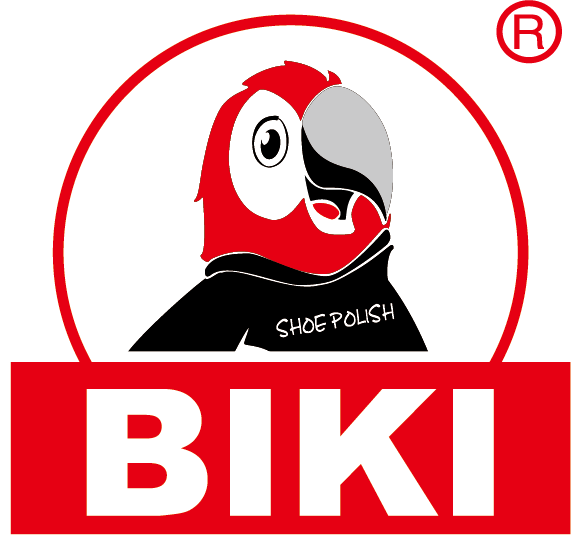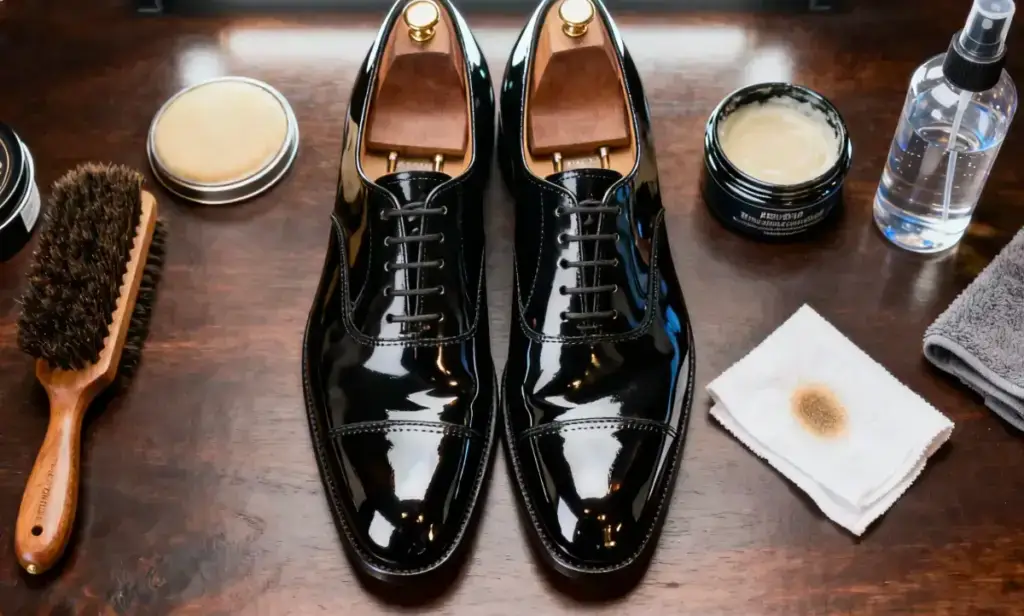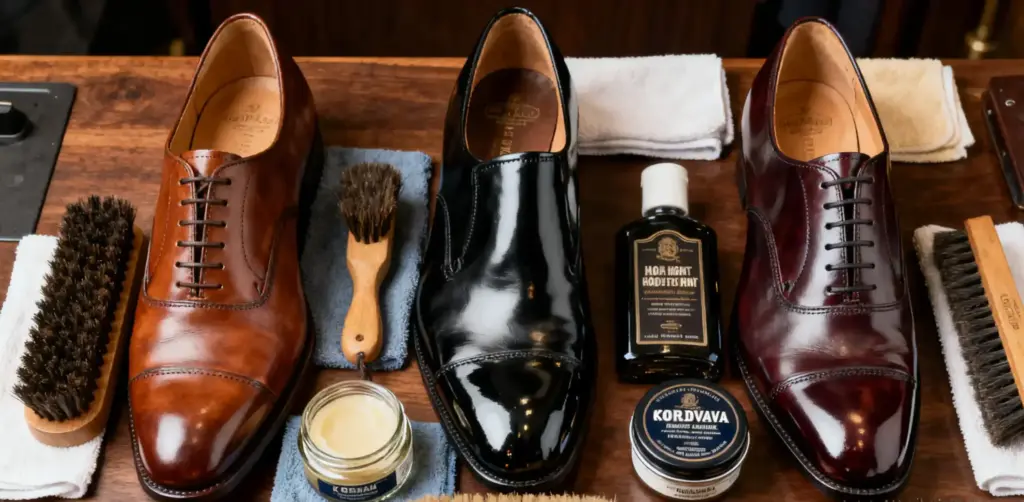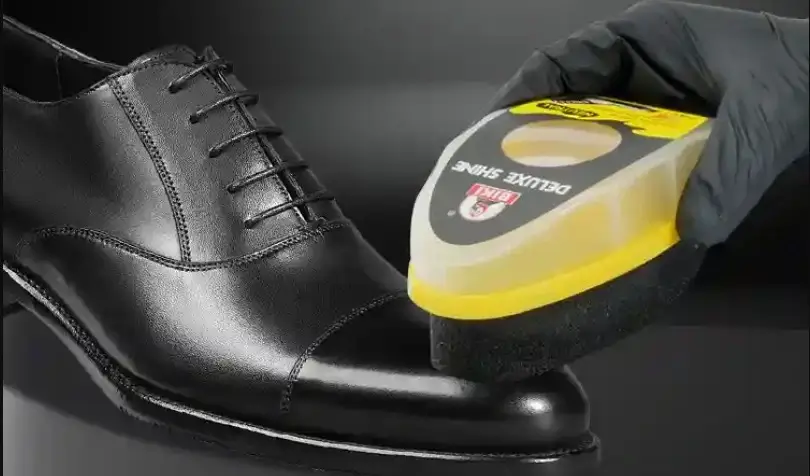Are you tired of scuffed, faded shoes? Maybe you want a custom color no store sells.
Shoe dyeing can bring old favorites back to life or create something completely new. Success comes from using the right product and technique for each material.
In this guide, we’ll show you everything you need to know. We cover different types of shoe dyes and give step-by-step instructions for leather, suede, and canvas.
Choosing the Right Formula When Dyeing Shoes
Dye vs. Paint: What’s the Difference?
The first step to a successful project is understanding the difference between shoe dye and shoe paint.
Dye soaks into the material’s fibers, permanently changing their color from within. This keeps the original texture and feel of the material.
Paint is a coating that sits on top of the material. It forms an opaque layer that covers both the original color and texture completely.
Here is a simple breakdown of their key differences:
| Attribute | Shoe Dye | Shoe Paint |
| Application Method | Penetrates and stains fibers | Coats the surface |
| Final Texture | Preserves original texture | Covers original texture |
| Best For | Changing color, refreshing fades | Covering damage, complex designs |
| Durability | Becomes part of the material | Can crack or peel with flexing |
A Guide to Dye Types
You must choose the right dye for your shoe material to get good results. Each type works best with specific fibers.
- Leather Shoe Dye (Alcohol & Oil-Based)
These dyes sink deep into smooth leather. The alcohol base carries color deep into the material for a rich, lasting finish. This is what you’d use for a deep color, like black leather dye for boots. As experts note, alcohol-based dyes offer deep penetration, making them perfect for this job. - Dye for Suede & Nubuck
Suede and nubuck need special care. Their fuzzy texture soaks up dye easily but can get hard or flat with the wrong product. You need a dye for shoes suede that’s made just for this purpose. These dyes are often water-based and color the fibers without ruining their soft feel. - Canvas Shoe Dye (Water-Based)
Canvas needs a flowing, water-based dye. The formula should spread easily through the fabric for an even color. Many good fabric dyes work well for this, giving bright colors that bond with the cotton.
How to Dye Shoes: A Step-by-Step Masterclass
Preparation is 90% of the job. Rushing this part often leads to poor results.
When using a deglazer on leather, the surface will change from slick to slightly sticky. This tells you the factory finish is gone and the leather can now take the dye.
Follow these basic steps for any material.
- Cleaning: First remove all dirt, oils, and residues. Use leather cleaner for leather, a suede eraser and brush for suede, or soap and water for canvas. The surface must be clean.
- Stripping (Leather Only): This step is a must for smooth leather. Use a leather preparer or deglazer with a cotton ball to remove the original factory coating. Without this step, the dye won’t soak in evenly.
- Masking: Use painter’s tape to cover areas you don’t want dyed. This includes soles, logos, eyelets, and hardware. Protect the inside by taping along the top edge.
- Stuffing: Fill the shoes with newspaper or shoe trees. This creates a firm surface to work on and prevents creases that cause uneven dyeing. It also stops dye from getting inside.
How to Dye Leather Shoes and Boots
With your leather shoes prepped, you can now add color. Be patient for a perfect finish.
- Patch Test: Always test your dye on a small hidden area first. The inside of the tongue works well. This confirms the color and checks for bad reactions with the leather.
- Application: Use the wool dauber that comes with most dyes, or a small clean paintbrush. Apply thin, even coats of dye. Use light circular motions to work the dye into the leather and avoid streaks. Don’t try to cover everything on the first coat.
- Drying: Let the first coat dry completely. Check the product instructions, but this usually takes 1-2 hours. The color may look lighter and uneven while wet; this is normal.
- Building Color: Add more thin coats to deepen the color and make it even. Let each coat dry fully before adding the next. Two or three thin coats usually give a deep, uniform color.
- Conditioning & Sealing: After the final coat has dried for at least 24 hours, restore the leather. Apply a good leather conditioner to add back moisture and flexibility. Finish with neutral shoe cream, polish, or acrylic finisher to seal the color, protect it, and add shine.
This process is backed by insights from experienced leathercrafters who value taking things step by step.
How to Dye Suede Shoes: A Delicate Touch
Dyeing suede requires care to keep its fuzzy texture. Never use products meant for smooth leather.
- Prep: Use a suede brush to lift the nap and remove loose dirt. Don’t use liquid deglazer. For stains, use a suede eraser or cleaner, then let the shoe dry completely.
- Application: Apply the dye for shoes suede with the included applicator or a small brush. Use steady, even strokes, working the dye into the base of the fibers for full color. Be thorough to avoid patches.
- Drying: Let the shoes dry completely for at least 24 hours. Keep them away from direct heat like radiators or sunlight, which can harden the suede.
- Restoring the Nap: This final step makes a big difference in quality. Once fully dry, use a clean suede brush to gently brush the nap. This lifts the fibers, breaks up stiffness from the dye, and brings back the soft, velvety texture.
How to Dye Canvas Shoes: Get Creative
Canvas is the easiest material to dye and allows for great creativity, from solid colors to custom designs.
- Prep: Wash the canvas shoes well with soap and water to remove dirt. Let them air dry until slightly damp to the touch. This dampness helps the dye spread more evenly.
- Application: For a solid color, use a paintbrush to apply the canvas shoe dye evenly across the fabric. For effects like ombré, you can use sponges. For tie-dye, you can use squeeze bottles for different colors.
- Setting the Color: This step is crucial to make the color permanent and stop it from bleeding when wet. Follow the dye maker’s instructions carefully. This might involve using a dye fixative, rinsing with vinegar, or applying heat with an iron or hairdryer.
Pro-Tips and Troubleshooting
Can I dye dark shoes lighter?
Generally, no. Shoe dye is see-through, meaning it stains the material but doesn’t cover it completely. The original color will always affect the final shade. Dyeing works best for going from light to dark or refreshing an existing dark color. You cannot dye a black shoe white.
How do I fix uneven color?
For leather, streaks can often be fixed by applying another very thin coat of dye, focusing on lighter areas to blend them in. From our experience, streaks usually happen when the first coat is too thick. Patience and thin layers work best. For suede, this is much harder to fix, which is why doing it right the first time matters so much.
How long does shoe dye last?
If done right, the color lasts a long time. For leather, if you properly stripped the surface and sealed the final color with a good finisher, the color is permanent and won’t rub off. Suede and canvas may fade over time with heavy wear and sunlight, but can be re-dyed to refresh them. How long it lasts depends on the quality of the sealer; a good acrylic finisher can protect dyed leather from scuffs and water for years.
How do I care for dyed shoes?
Care for your newly dyed shoes like any quality pair.
- Leather: Condition regularly to keep it soft and use matching or neutral cream polish to maintain shine and protection.
- Suede: Use a waterproofing spray to guard against moisture and stains. Brush the nap regularly with a suede brush.
- Canvas: Spot clean with mild cleaner when possible. Avoid machine washing unless the dye is made for it, as this can cause fading.
Conclusion
You can transform your shoes with great results. Success depends on three key things: choosing the right dye for your material, careful preparation, and patient application.
With this guide, you now know how to tackle your next shoe dyeing project. You can restore black leather boots or create a custom masterpiece.
At BIKI, we believe quality results start with quality chemistry. Our dedication to excellence is why professionals and hobbyists trust our products for their projects.
For cobblers, artisans, and businesses needing consistent, high-quality shoe care solutions, BIKI offers a B2B partnership program. From bulk purchases of our premium shoe care products to custom formulation support, we can be your trusted supplier. Contact our wholesale team today to learn more about how we can support your business.






